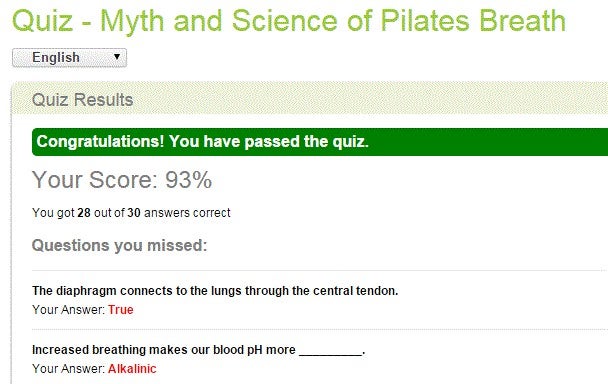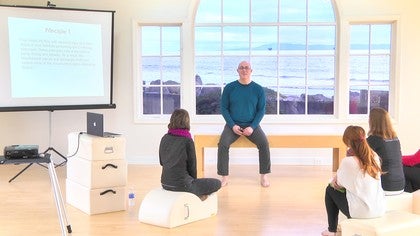Premium Continuing Education workshop
You can view a 2 minute preview. For details, scroll down below the video.
Workshop #1771
Myth and Science of Breath
Description
Is there a correct way to breathe during Pilates movement? This workshop with Dr. Brent Anderson will explore the answer to that question and examine the use of breath as a "tool" rather than a "rule." His teachings consist of scientific and practical applications of breath as they pertain to movement efficiency. Brent explores how breath facilitates movement, while movement in turn facilitates breath. Understanding of the true biomechanics and motor control of breath is a valuable tool in bettering one's practice, health, and quality of life.
Objectives
-Learn about the anatomy and biomechanics of breath and the parts of the body that work to create each breath
-Learn about the physiology of breath and the exchange of gasses that compose breath
-Explore the historical philosophy of breath as set forth by Joseph Pilates, Blandine Calais-Germaine, and Robert E. Svoboda
-Observe the synergy between the use of breath in improving movement and the use of movement in improving breath
About This Video
Continuing Education Credits
If you complete this workshop, you will earn:
3.0 credits from National Pilates Certification Program (NPCP)
The National Pilates Certification Program is accredited by the National Commission for Certifying Agencies (NCCA)
2.0 credits from Pilates Association Australia (PAA)
The Pilates Association Australia (PAA) is an independent and not-for-profit organization established by the Pilates industry as a regulatory body for control of quality instruction, member support, and integrity within all legitimate approaches to the Pilates Method.
Workshops: Teaching Methodology
Comments

 I rewatched, and Brent definitely says (gas exchanges around minute 3), and his slide corroborates that increased breathing makes the blood more alkalinic. Thanks! p.s. there is a typo on question 26...the word "most" should be "must" ...yes, I'm anal
I rewatched, and Brent definitely says (gas exchanges around minute 3), and his slide corroborates that increased breathing makes the blood more alkalinic. Thanks! p.s. there is a typo on question 26...the word "most" should be "must" ...yes, I'm anal
I am a polestar teacher and have all my principles online and just wandered how much there is in the lecture that isn't in the Breath principles presented by Brent I have already? Don't want to repeat stuff when I have to pay for it!
Many thanks
Jo
You need to be a subscriber to post a comment.
Please Log In or Create an Account to start your free trial.























